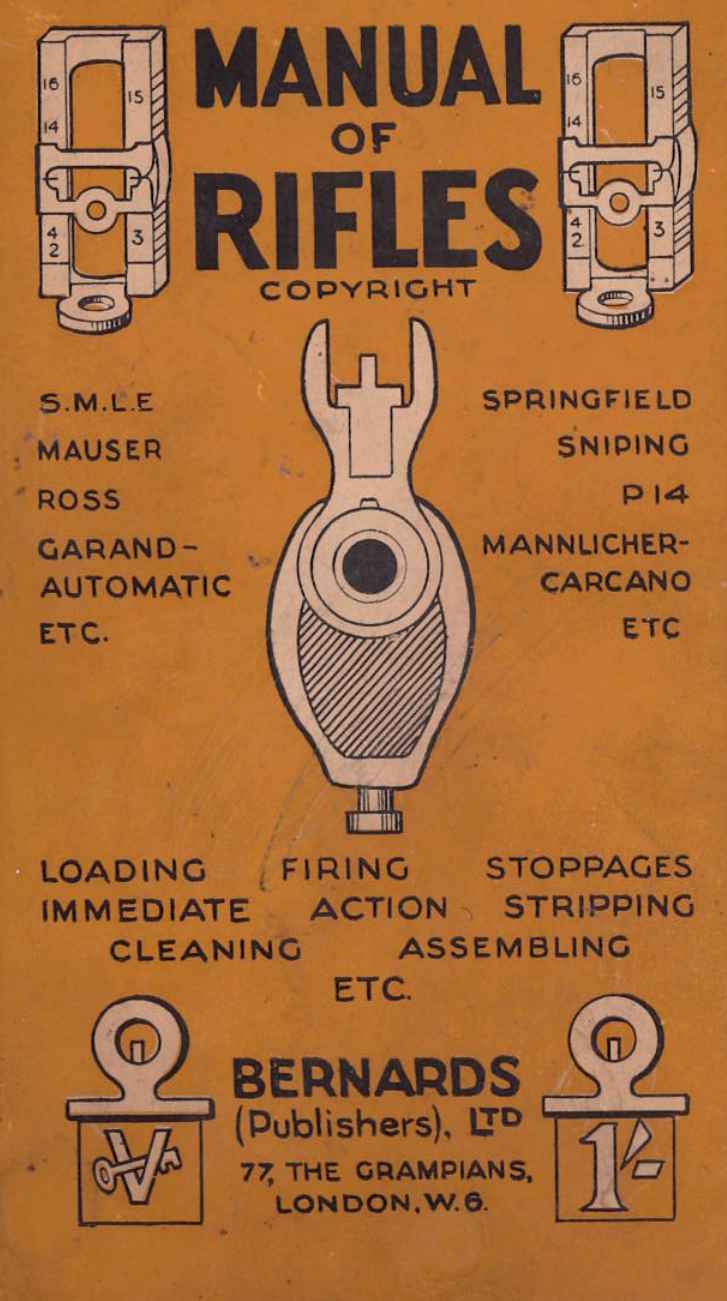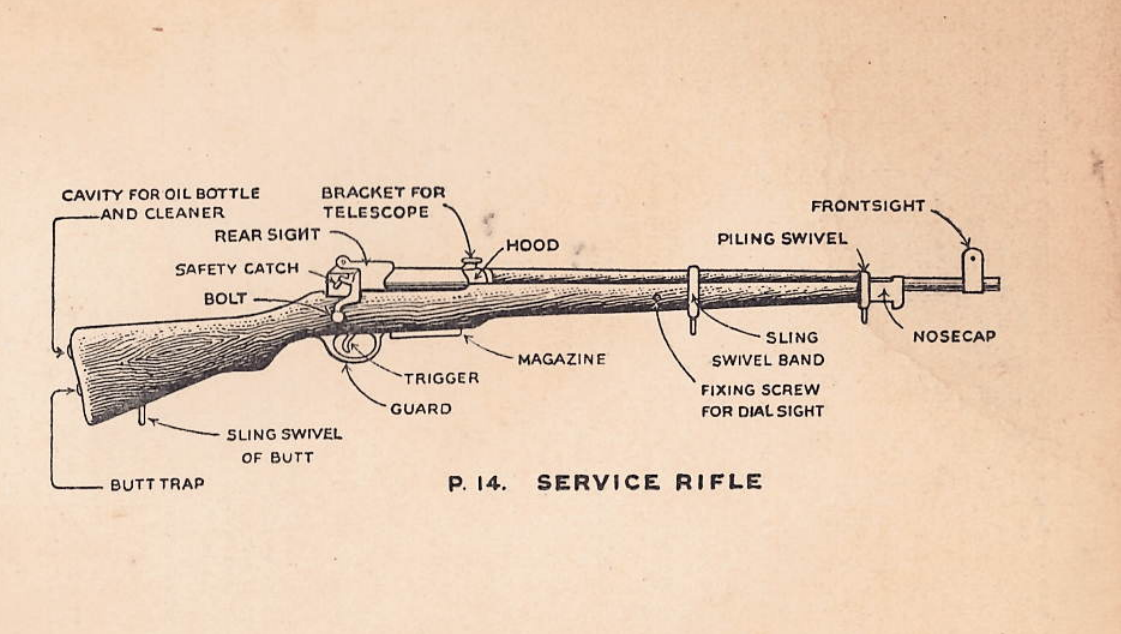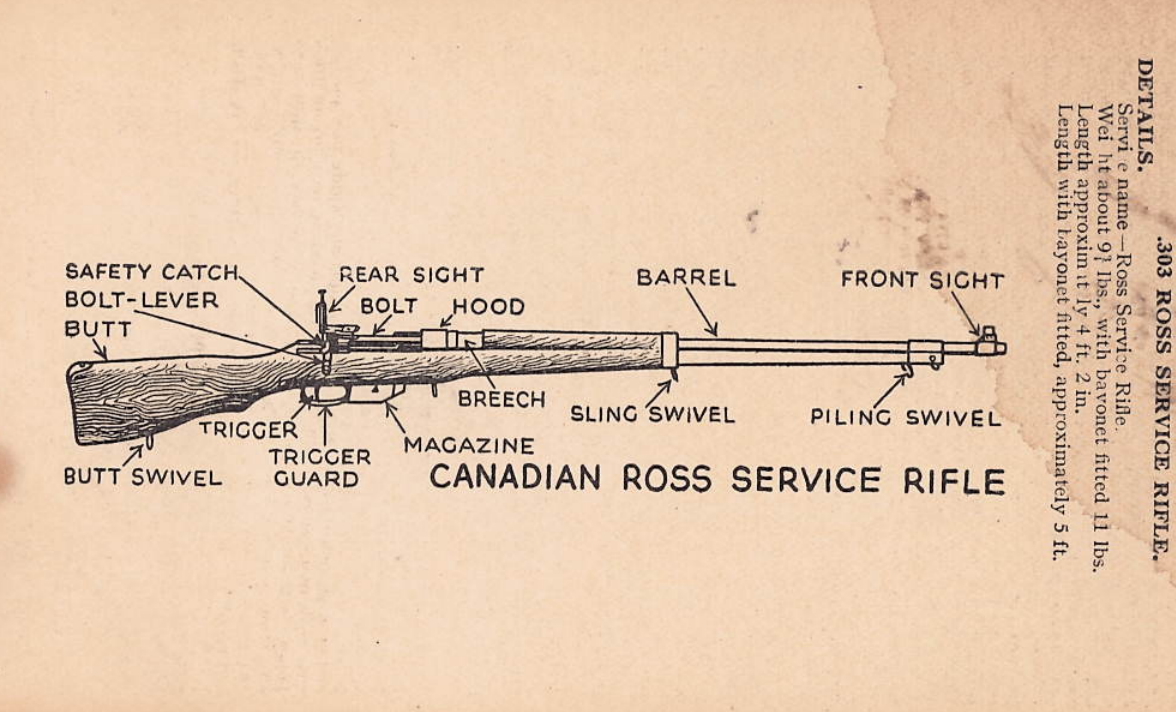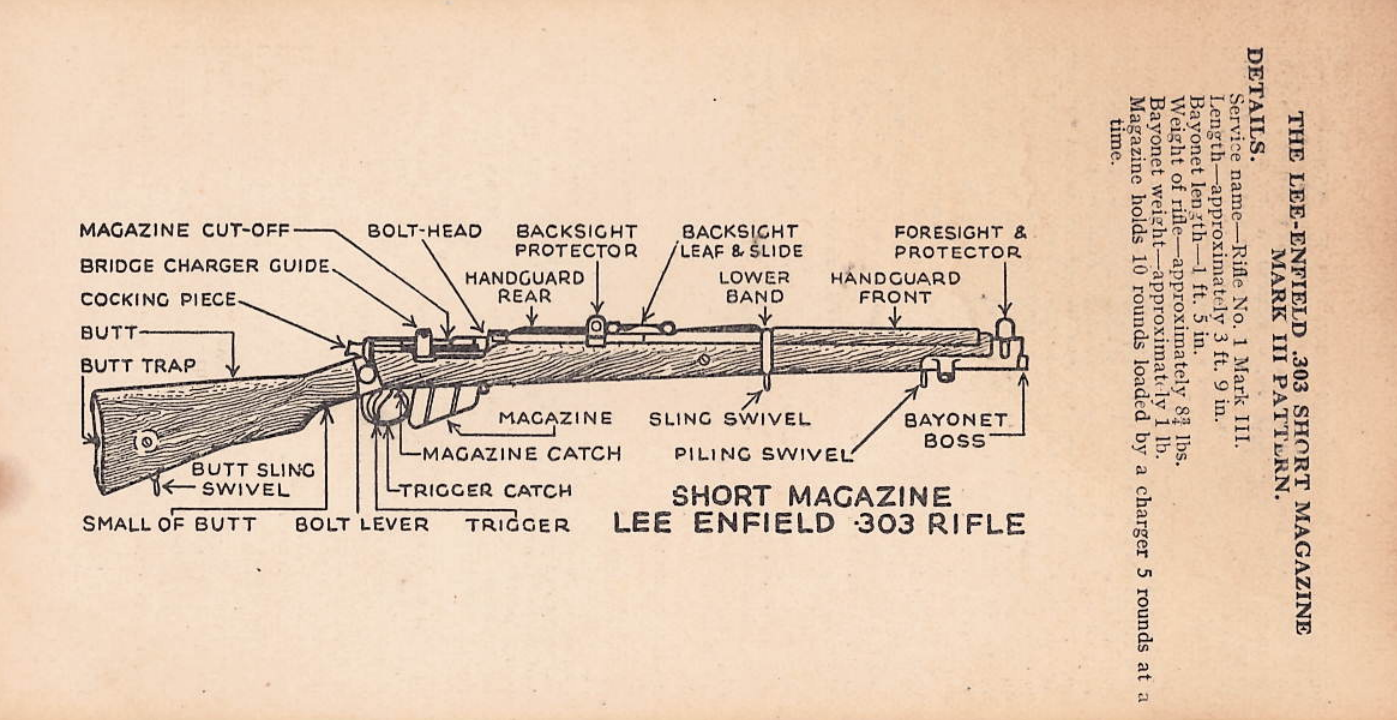
This Booklet was recently donated to the Museum and explains the different parts and the operating of different kinds of rifles. These bookelts were published from 1940 onwards and include diagrams of many World War One rifles.
The first rifle which is featured in the booklet is the P14 Service Rifle. The Rifle, .303 Pattern 1914 (or P14) was a British Service Rifle of the First World War period. A bolt action weapon with an integral 5-round magazine, it was principally contract manufactured by companies in the United States. It served as a sniper rifle and as second line and reserve issue until being declared obsolete in 1947. The pattern 1914 Enfield was the successor to the Pattern 1913 Enfield experimental rifle and the predecessor of the US Rifle M1917 Enfield.

The Short Magazine Lee Enfield Rifle is a bolt-action, magazine-fed repeating rifle that served as the main fiream used by the military forces of the British Empire and Commonwealth during the first half of the 20th Century. It was the British Army’s standard rifle from its official adoption in 1895 until 1957. the WW1 versions are often referred to as the “SMLE”, which is short for the common “Short, Magazine, Lee-Enfield” varient.
The Ross rifle is a straight-pull bolt action .303 inch-calibre rifle that was produced in Canada from 1903 until 1918. The Ross Mk.II (or “model 1905”) rifle was highly successful in target shooting before World War One, but the close chamber tolerances, lack of primary extraction and overall length made the Mk.III (or “1910”) Ross rifle unsuitable for the conditions of trench warfare, exacerbated by the often poor quality ammunition issued. By 1916, the rifle had been withdrawn from front line service, but continued to be used by many snipers of the Canadian Expiditionary Force until the end of the war due to its exceptional accuracy.



